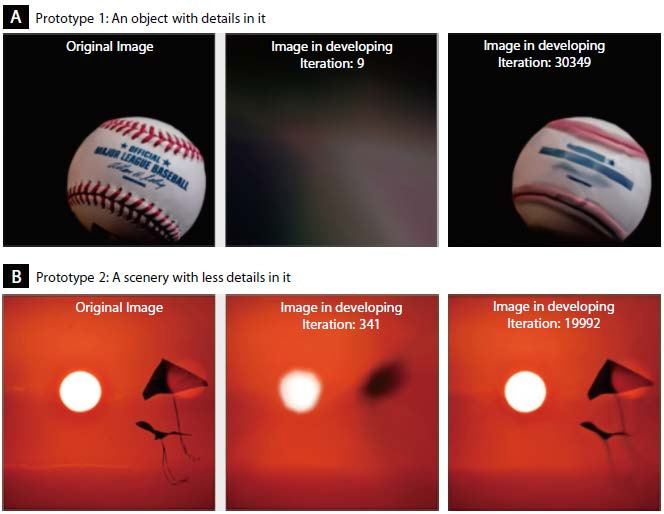
Recent advancements in deep learning have begun to develop into a medium for widespread adoption and cultural impact. Computers become to capture high-level abstraction and learn concepts from images, texts, and audio signals.
Inspired by the philosophy of Impressionism, a series of experiments were conducted to explore a method of depicting an impression of the world formed by computers using deep neural networks (DNNs). For this experiment, I built a conceptual framework adopting the insights acquired from early Impressionism. Then, I reconstructed an original image through the DNN as an approximation of human perception of the world to determine whether computers with the DNNs perceive and capture the characteristics of sceneries to portray their impression as the Impressionists did.
In this demo, the model the pixels of an image (left) as a learning problem, meaning that it takes the pixel coordinations and learns to predict the best possible RGB values on the answer sheet (right) using regression. As a result, I realized that the entire model tried to perform compression due to the nature of the deep neural networks I designed — the entire image was being encoded in the weights of the network, and then unpacked information with blur.
2014
Submitted to Computational Creativity’16


